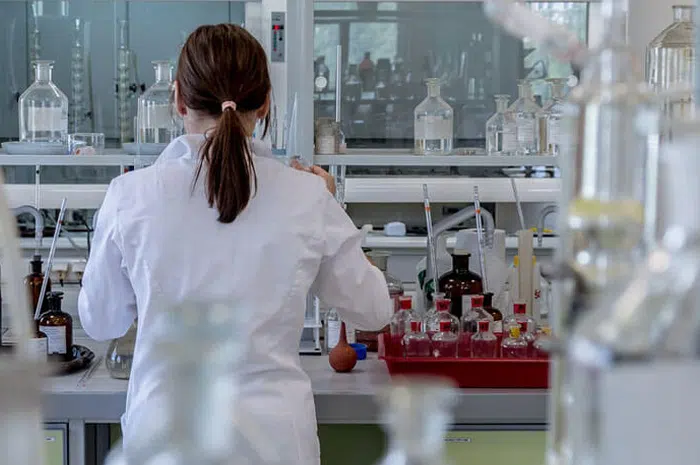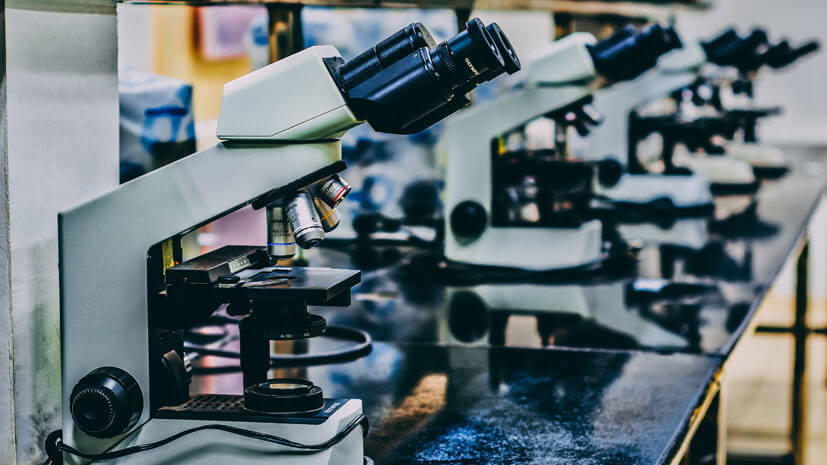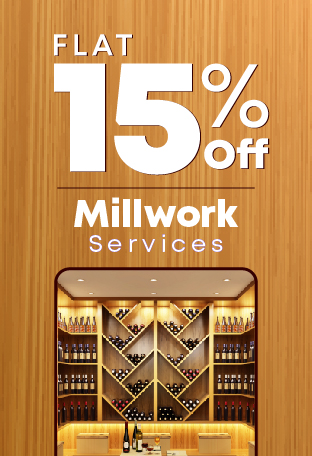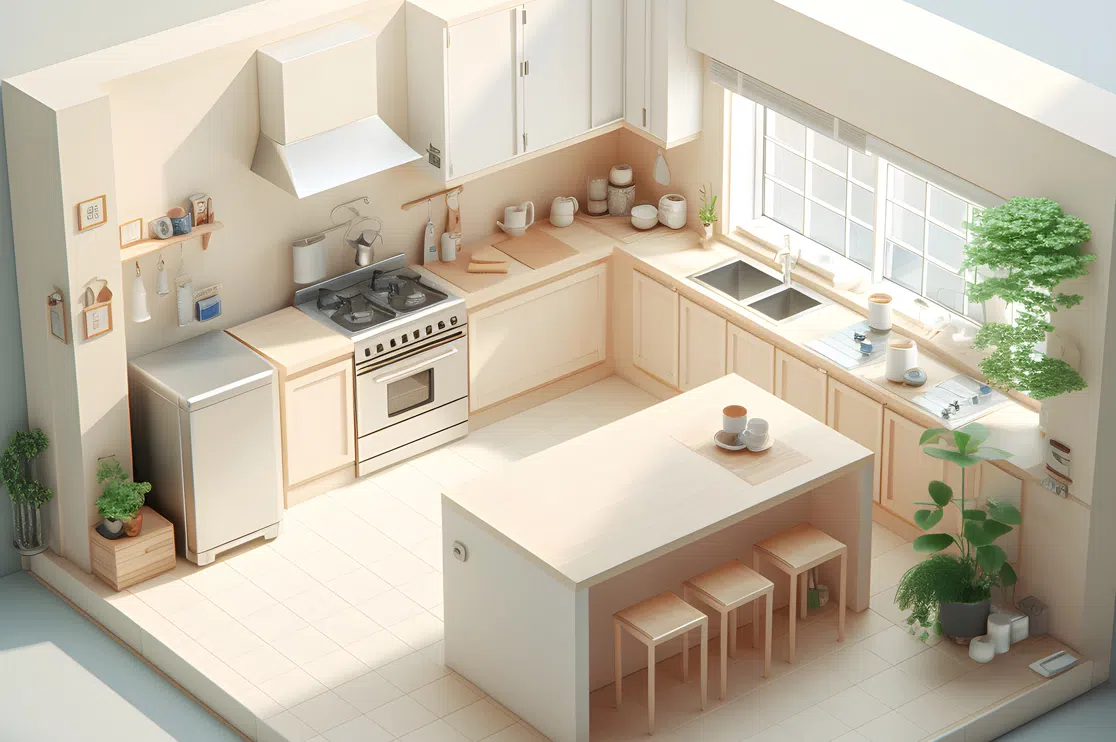Laboratory casework and countertops come in a wide variety of designs and materials. However, their functionality, relevance of usage, and exposure within the laboratory must be prioritized. The casework and countertops in the laboratory will have continuous contact with abrasive, reagents, and corrosive chemicals that increase the rate of wear of this equipment. Consequently, this condition should be factored into the millwork design and drafting of laboratory casework and countertops for functionality and longevity purposes.
How to Choose the Perfect Laboratory Casework
Laboratory casework goes beyond choosing the right cabinets, countertops, and drawers that will look awesome in the laboratory. Rather, it involves creating a balance between functionality and aesthetics. When looking for the right laboratory casework and countertops, here are some factors you need to consider.
Table of Contents:
-
- Type or Layout of the Laboratory
Creating the perfect architectural millwork solutions for a laboratory should be based on whether the lab is an open or closed type because the casework to be chosen wood determines how the lab will actually function.
Open laboratories are usually more social and encourage innovation, communication, or collaboration among employees, which could be an underlying factor in getting projects completed promptly. Closed laboratories have dedicated spacing for privacy and safety.
- Flexibility Need of the Space
Millwork design and drafting for a laboratory should consider if the lab requires frequent changes in direction, staff, and projects. If that is the case, a high level of flexibility is required to create laboratory casework for a section of the lab for dedicated space. Existing and new teams coming into the lab will know what they need to do their job and the right casework already supplied would available. In essence, the casework should be developed with flexibility factored in.
- Budget
Most millwork drafting solutions consider the budget in creating laboratory casework that will ensure the budget is not exceeded. It should be mentioned that the budget will impact the choice of materials. However, safety and quality should not be compromised. There are certainly countertops and cabinetry that will meet the laboratory’s needs and budget.
- Exposure
Another factor to consider when thinking about the right millwork design and drafting for your laboratory casework and countertops is exposure. Determine the type of chemicals that the casework or lab cabinets and countertops will be exposed to. If you need a higher level of chemical resistance, consider a combination of phenolic or stainless steel furniture and trespass for your laboratory. Study the chemical exposure of the materials expected to be used for the laboratory casework to choose the right materials for countertops, furniture, and other casework items.
- Type or Layout of the Laboratory
Top Materials for Laboratory Countertops
When choosing for the right laboratory casework, there are several types of casework you can choose; there are hundreds of styles, colors, materials, and configurations that meet the requirements of your laboratory to bring your ideas to reality.
Some of the available casework you can choose include wood, stainless steel, metal, laminate, and phenolic. However, your preference should be that casework that offers optimum containment performance and safety.
Besides, laboratory countertops are expected to be highly functional and be resistant to chemical, bacteria, fungi, scratch, and moisture. This is a crucial factor to be considered for any laboratory millwork shop drawings. Some top materials best suited for lab countertops meet most requirements for high-quality laboratory casework and countertops.
If you are given architectural millwork projects for laboratory casework and countertops and you are not sure of the right countertops to use. Here are some materials with factors that make them suitable for the project.
These materials are best for present and future use.
-
-
- Phenolic Resin
Countertops made with phenolic resin are solid and lightweight. The countertops have layers of natural kraft paper saturated with phenolic resin and processed with high-intensity heat.
Features
- High resistance to chemical
- High resistance to bacteria and fungi
- Scratch-proof
- Moderate resistance to high corrosion
- Resistant to up to 350 degrees Fahrenheit heat
- Strong and capable of withstanding impact and stress fractures
- Mid-price
The only disadvantage of phenolic resin countertops is that it is not fire retardant.
Best Application
The phenolic resin material is best for laboratory countertops meant for chemical, biological, clinical, and analytical laboratories. When the lab requires a work surface for experiments and tests that depend on non-contamination, chemical resistance, and hygiene platform, phenolic resin countertops are the way to go.
- Epoxy Resin
Epoxy resin is a blend of materials cured as a sturdy product. Countertops made from Epoxy resin are durable, non-porous, and capable of withstanding extreme and harsh conditions. They are best suited for sinks and extreme moisture.
Features:
- High resistance to bacteria and fungi
- High chemical resistance
- Heavy duty
- High resistance to corrosion
- Highest resistance to water and moisture
- Scratch-proof
- Heat resistance above 350 degrees Fahrenheit
- Capable of holding up to impact and stress fractures
- Flame retardant.
Best Application
Epoxy resin is best for laboratory for hospitals, medical, biological science, microbiology and research, and development. If harsh chemicals are used in the laboratory in focus, as well as open flames and instruments that generate extreme heat, Epoxy resin countertops are the best choice. They are durable, low maintenance, and resistant to harsh chemicals.
- Stainless Steel
The composition of stainless steel includes chromium and nickel. This an excellent bled of functionalities as chromium is resistant to corrosion and dust while nickel is resistant to heat and stains.
With its non-porous surface, no substances or liquid can penetrate the material. It does not allow the growth of mold, bacteria, and common germs.
Features
- High resistance to bacteria and fungi
- High resistance to water and moisture
- Moderate resistance to chemical
- Moderate resistance to corrosion
- Extreme resistance to heat above 1500 degrees Fahrenheit but may discolor after exposure to prolonged high temperature.
- Moderate to heavy-duty
Downsides of Stainless Steel
- Very costly
- Cannot withstand impact, it dents.
- Low scratch resistance
Best Applications
Stainless steel is suitable for countertops for laboratories meant for hospitals, pharmaceuticals, food testing, clean rooms, chemicals, and biological science. Stainless steel countertops offer non-contaminant surfaces.
- Chemical Resistant Laminate
Chemical laminate involves the application of a melamine resin over the decorative surface paper that is bonded into Kraft papers filled with phenolic resin. This decorative surface is highly functional, durable, and highly resistant to chemicals. However, it should not be exposed to heat above 275 degrees Fahrenheit.
Features
- Appealing aesthetics
- Can withstand up to 275 degrees Fahrenheit heat
- High resistance to chemicals
- Mid-price
Downsides
- Low resistance to bacteria and fungi
- Low resistance to corrosion
- Low resistance to water and moisture
- The material can chip
- Light duty
Best Application
Chemical resistant laminate countertops are best suited for laboratories meant for product testing, urology, photographic darkroom, pathology lab, dental, and beauty products.
Creating the best architectural millwork and laboratory casework and countertopsshould prioritize functionality more than the aesthetics part of the project. Besides, laboratories are supposed to be going concerns. As a result, the durability or longevity of the casework and countertops should be paramount.
When creating millwork design and drafting for laboratory casework and countertops, and you need professional help.
BluEntCAD is a reputable company you can contact for project millwork shop drawings and millwork drafting solutions.
- Phenolic Resin
-
Maximum Value. Achieved.








 7 Stunning 3D Kitchen Design Ideas for a Perfect Remodel
7 Stunning 3D Kitchen Design Ideas for a Perfect Remodel  Outdoor Kitchen Designs and Cabinetry for Amenities Beyond Interiors
Outdoor Kitchen Designs and Cabinetry for Amenities Beyond Interiors  Kitchen Cabinet Trends Your Millwork Drafter Must Consider for Remodeling Projects
Kitchen Cabinet Trends Your Millwork Drafter Must Consider for Remodeling Projects  7 Kitchen Cabinet Grades for Remodeling
7 Kitchen Cabinet Grades for Remodeling